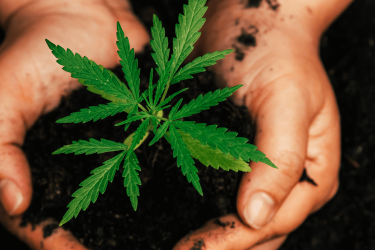If we fell in love with the bhangara, which means traditional hemp fabric in Nepali, it was mainly for its colors, its symbolism, its quality and because it responds to our desire to create responsible, durable and ethical fashion accessories for men and women.
Hemp: this is the story
The hemp used to make our backpacks and accessories is a variety of Cannabis sativa L . Hemp was introduced to North America around 1611. Initially it was used to make paper, fuel and ropes, as a matter of fact, the ropes, candles and nets used in the caravels with which Christopher Columbus discovered America, were made of hemp.
As for the United Kingdom, hemp was imported from Asia and played a key role in the construction of the British Empire. Centuries later it was such the importance of this crop that Henry VIII imposed a penalty on farmers that did not grow hemp on their land.
It was in 1937, when the United States banned the use of hemp in order to favor cotton and the arrival of petrochemicals. Its psychotropic properties were pointed out and, despite its structural durability, the UN's Convention on Narcotic Drugs prohibited the commercial growth of hemp in many countries.
After several attempts, in 2018, an amendment to the “Farm Bill” finally legalizes the use of hemp, its seeds and derivatives in the USA. Currently, given its performance and the ecological advantages it offers, it is being given a new opportunity. Proof of this is its use by various designers at the Fashion Week 2019 and 2020.
Cannabis sativa L., the key to organic production
Hemp is in perfect harmony with our values and responds to the environmental demands, or those that should exist, in textile manufacturing: having the least possible impact on the environment.
At 2500 m altitude, Cannabis sativa L. crops do not need pesticides, fungicides or herbicides. The plant is perfectly adapted to the mountain climate of Nepal and it defends itself on its own against the aggressions of parasites. As a result of all these qualities, they leave soils and streams clean, even sanitized. Better still, the farmers who grow it are not exposed to harmful chemicals.
Unlike other crops and thanks to roots that can reach up to 3 m deep, the water needs are very low. Therefore, it adapts very well to the drought of the Asian dry season. On the other hand, its nitrogen demand is also minimal, twice less than that of wheat, since its roots are capable of extracting nutrients from lower layers of the soil.
A very striking fact is its ability to fix CO2: at an equivalent area, a hemp plantation absorbs the same amount of CO2 as a forest. Thus, it is a great reservoir of biodiversity, hosting numerous species of spiders and carabid (large terrestrial beetles), which are in turn predators of parasites that could affect crops.
Hemp in responsible fashion
If hemp is endowed with natural characteristics favorable to organic production, it also has undeniable advantages once processed.
For thousands of years, hemp was used by sailors to make ropes, sails, sacks ... Solid, reliable and resistant to wear and tear, in ancient times it made it easier to obtain textiles resistant to moisture and light. Once already in modern times, even Henry Ford used it in the construction of his automobiles.
We have chosen this same fiber for our BHANGARA backpacks and accessories. The know-how in spinning, weaving and dyeing that the Nepalese possess deserves to be known outside their borders. Its beauty as well as its resistance make this hemp a noble and unique material.
By carrying a hemp backpack, computer case, wallet or tobacco case with you, you are choosing a responsible, unique object that will accompany you for many years.
But everything has an end, and in BHANGARA we know it. So when the life of your adventure partner is over, its completely biodegradable natural fibers will decompose and return to nature, that is, where they belong.
If you are wondering: Textile hemp, can you smoke it? Read the article: Who would make backpacks with hemp?
